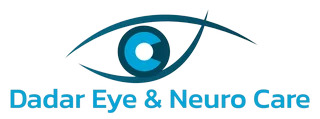+918042757344

This is your website preview.
Currently it only shows your basic business info. Start adding relevant business details such as description, images and products or services to gain your customers attention by using Boost 360 android app / iOS App / web portal.
Description
Oculoplastic procedures (also known as oculo-plastic or ophthalmic plastic surgery) focus on the area surrounding the eyes, including the eyelids, orbit (eye socket), tear ducts, and the face. These procedures can be either functional or cosmetic, aimed at improving vision, appearance, or comfort by correcting deformities, abnormalities, or aging-related changes. Oculoplastic surgeons are trained in both ophthalmology and plastic surgery, allowing them to perform delicate surgeries on this complex part of the face. Common Oculoplastic Procedures: 1. Blepharoplasty (Eyelid Surgery) Purpose: To remove excess skin, muscle, or fat from the upper or lower eyelids. It can be functional (to improve vision obstructed by drooping eyelids) or cosmetic (to rejuvenate the appearance of the eyes). Indications: Sagging or drooping upper eyelids (ptosis). Puffy or baggy lower eyelids. Vision obstruction due to excess skin on upper eyelids. Procedure: Involves making incisions along the natural creases of the eyelid to remove or reposition tissue, and closing the incisions to create a more youthful, refreshed appearance. 2. Ptosis Surgery Purpose: To correct drooping or sagging of the upper eyelid (ptosis), which can impair vision or affect appearance. Indications: Congenital ptosis (present at birth). Age-related or acquired ptosis. Procedure: Depending on the severity, the surgery may involve shortening or tightening the muscles that lift the eyelid (levator muscle) or attaching the eyelid to another muscle (frontalis suspension). 3. Ectropion Repair Purpose: To correct ectropion, a condition where the lower eyelid turns outward, causing the inner surface to be exposed and leading to dryness, irritation, and possible infection. Indications: Age-related ectropion (common in older adults). Scarring or trauma-related ectropion. Procedure: Surgery typically involves tightening the muscles and tendons of the eyelid or repositioning the eyelid to its proper place. 4. Entropion Repair Purpose: To correct entropion, a condition where the eyelid (usually the lower lid) turns inward, causing the eyelashes to rub against the cornea, leading to irritation, discomfort, and potential damage to the eye. Indications: Age-related entropion. Scarring or injury-related entropion. Procedure: Surgery involves tightening or repositioning the eyelid to prevent it from turning inward. 5. Tear Duct Surgery (Dacryocystorhinostomy - DCR) Purpose: To treat blocked tear ducts, which cause excessive tearing (epiphora) or recurrent eye infections. Indications: Chronic tearing. Tear duct infections (dacryocystitis). Procedure: The most common approach is dacryocystorhinostomy (DCR), where a new passageway is created between the tear sac and the nasal cavity to allow tears to drain properly. This can be done externally (through a small incision on the side of the nose) or endoscopically (through the nasal passage). 6. Orbital Surgery Purpose: To address issues in the eye socket (orbit), including tumors, fractures, or diseases affecting the eye muscles, nerves, or blood vessels. Types of Orbital Surgery: Orbital Fracture Repair: To repair fractures in the eye socket, often caused by trauma. Orbital Decompression: To relieve pressure on the optic nerve or eye muscles, commonly done for patients with thyroid eye disease (Graves’ disease). Orbital Tumor Removal: To remove benign or malignant tumors from the orbit. Indications: Orbital trauma, tumors, or conditions causing proptosis (bulging eyes). 7. Canthoplasty and Canthopexy Purpose: To strengthen or reposition the lower eyelid to improve its function and appearance. Canthoplasty: A reconstructive surgery to tighten the lower eyelid and reinforce the support structures. Canthopexy: A less invasive procedure that tightens the outer corner (canthus) of the eyelid without cutting or reconstructing it. Indications: Lower eyelid laxity, sagging, or malposition after trauma or due to aging. 8. Enucleation and Evisceration (Eye Removal) Purpose: To remove a diseased or damaged eye while preserving the appearance of the eye socket. This may be necessary in cases of severe trauma, infection, or cancer. Enucleation: Complete removal of the eye, including the entire globe (eyeball), with an implant placed in the socket to maintain its shape. Evisceration: Removal of the contents of the eye, leaving the outer shell of the eyeball (sclera) intact, with an implant placed inside. Indications: Severe trauma, painful blind eye, intraocular tumors (like retinoblastoma or melanoma), or uncontrollable eye infections.

